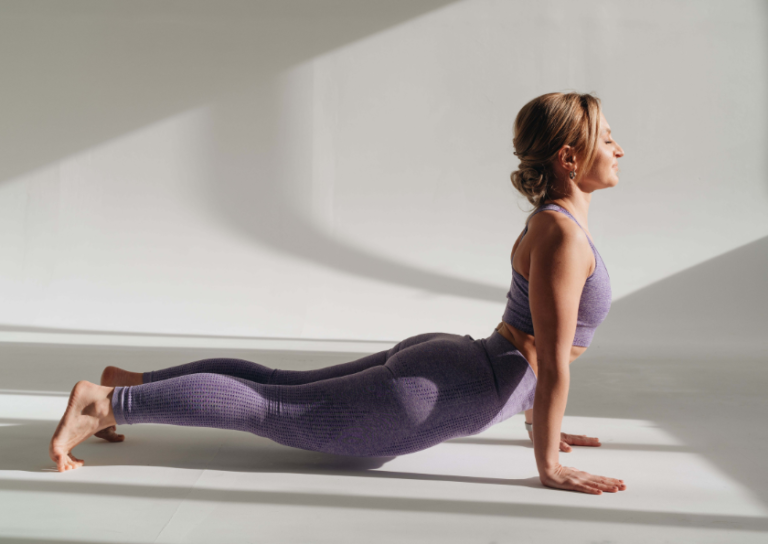Guest Post by Laura Watson
Understanding the Importance of Good Posture
Good posture is the foundation for a healthy and balanced body. It involves the proper alignment of your spine, shoulders, and hips, allowing your muscles and joints to function efficiently. When you maintain good posture, your body is in a state of equilibrium, reducing strain and stress on your musculoskeletal system. This not only enhances your physical appearance but also plays a crucial role in your overall well-being.
Proper posture promotes better circulation, allowing your body to effectively transport oxygen and nutrients to your cells. It also supports healthy breathing by keeping your diaphragm and rib cage in an optimal position. Furthermore, good posture can improve your digestion, as it allows your internal organs to function without unnecessary pressure or strain.
Maintaining good posture is not just about looking more confident and professional; it is a reflection of your body’s ability to function at its best. When your spine is properly aligned, the muscles surrounding it can work in harmony, reducing the risk of injury and chronic pain. Good posture also enhances your balance and coordination, making it easier to engage in physical activities, body transformation and sports without the fear of injury.
Causes and Consequences of Poor Posture
Poor posture, on the other hand, can have far-reaching consequences on your physical and mental health. Slouching, hunching, or tilting your head forward can lead to a host of issues, including neck and back pain, headaches, and even respiratory problems.
One of the primary causes of poor posture is the sedentary lifestyle that many of us have adopted in the modern world. Spending long hours sitting at a desk, staring at a computer screen, or using mobile devices can cause the muscles in your shoulders, neck, and back to weaken and tighten, leading to an imbalance in your body’s alignment.
Additionally, certain medical conditions, such as osteoarthritis, scoliosis, and cervical disc or herniated discs, can contribute to poor posture. Injuries or traumas, like whiplash or a herniated disc, can also disrupt the proper alignment of your spine, leading to chronic pain and postural issues.
The consequences of poor posture can be far-reaching. Chronic neck and back pain can limit your mobility and reduce your quality of life. Headaches, fatigue, and breathing difficulties can all be attributed to poor posture. Moreover, poor posture can negatively impact your self-confidence and social interactions, as it can make you appear less approachable and engaged.
How Physiotherapy Can Help Improve Posture
Physiotherapy, a holistic approach to healthcare, offers a comprehensive solution for improving posture and addressing the underlying causes of poor alignment. Best physiotherapists are trained to assess your musculoskeletal system, identify the root causes of your postural issues, and develop a personalized treatment plan to address them.
One of the primary ways physiotherapists help improve posture is by identifying muscular imbalances and weaknesses. They will assess the strength and flexibility of the muscles in your neck, shoulders, back, and core, and then design a targeted exercise program to address any deficiencies. By strengthening the muscles that support your spine and improving their flexibility, physiotherapists can help you achieve and maintain proper alignment.
In addition to exercises, physiotherapists may also utilize various manual therapy techniques, such as joint mobilization, soft tissue massage, and trigger point release, to address areas of tightness or restriction. These techniques can help to improve joint mobility, reduce muscle tension, and restore the proper function of your musculoskeletal system.
Physiotherapists may also recommend the use of supportive devices, such as braces or posture-correcting devices, to help you maintain proper alignment during your daily activities. These devices can serve as a reminder to keep your body in the correct position and provide additional support to your muscles and joints.
The Role of Exercises and Stretches in Posture Improvement
Exercises and stretches are an essential component of physiotherapy for posture improvement. By targeting the specific muscles and muscle groups that contribute to poor posture, physiotherapists can help you develop the strength, flexibility, and endurance needed to maintain proper alignment.
One of the key exercises physiotherapists often recommend for posture improvement is core strengthening. Your core muscles, which include the abdominal, back, and hip muscles, play a crucial role in supporting your spine and maintaining good posture. By engaging in exercises that target these muscle groups, you can improve your overall stability and balance, reducing the strain on your neck and back.
Stretching is another crucial element of physiotherapy for posture improvement. Many individuals with poor posture experience tightness in the muscles of the chest, shoulders, and upper back. Physiotherapists will often prescribe specific stretches to address these areas, helping to improve flexibility and range of motion. This, in turn, can help to alleviate pain and discomfort associated with poor posture.
In addition to core strengthening and stretching, physiotherapists may also incorporate exercises that focus on improving the mobility and coordination of your upper body. These exercises may involve movements that challenge your balance, such as shoulder rolls or neck rotations, to help you develop better control and awareness of your body’s positioning.
Techniques Used by Physiotherapists to Correct Posture
Physiotherapists have a wide range of techniques and strategies they can employ to help correct poor posture. From hands-on manual therapy to the incorporation of specialized equipment, they work to address the underlying causes of postural issues and provide lasting solutions.
One of the most common techniques used by physiotherapists is manual therapy, which involves the use of their hands to assess and treat musculoskeletal problems. This may include techniques such as joint mobilization, soft tissue massage, and trigger point release. These methods can help to reduce muscle tension, improve joint mobility, and restore proper alignment.
Another key technique used by physiotherapists is the application of postural re-education. This involves teaching patients the correct way to stand, sit, and move, with a focus on maintaining proper spinal alignment. Physiotherapists may use visual aids, such as mirrors or postural feedback devices, to help patients become more aware of their body positioning and make the necessary adjustments.
In addition to manual therapy and postural re-education, physiotherapists may also utilize specialized equipment to aid in the correction of poor posture. This may include tools like posture-correcting braces, stability balls, or even virtual reality systems that provide real-time feedback on body positioning. By incorporating these technologies, physiotherapists can create a more engaging and interactive treatment experience for their patients.
The Benefits of Physiotherapy for Posture Improvement
The benefits of physiotherapy for posture improvement are numerous and far-reaching. By addressing the root causes of poor posture and implementing a comprehensive treatment plan, physiotherapists can help individuals achieve and maintain proper spinal alignment, leading to a host of positive outcomes.
One of the primary benefits of physiotherapy for posture improvement is the reduction of pain and discomfort. By correcting muscular imbalances and restoring proper joint function, physiotherapists can alleviate the chronic neck, back, and shoulder pain that often accompanies poor posture. This, in turn, can improve an individual’s overall quality of life and allow them to engage in daily activities without the burden of constant discomfort.
Improved posture can also have a positive impact on an individual’s respiratory function. When the spine is properly aligned, the diaphragm and rib cage can move more freely, allowing for deeper, more efficient breathing. This can lead to increased oxygen intake and improved overall respiratory health, which can have a cascading effect on the body’s other systems.
Another significant benefit of physiotherapy for posture improvement is the enhancement of athletic performance and injury prevention. Proper posture is essential for optimal muscle function and joint stability, which are crucial for athletic endeavors. By addressing postural issues, physiotherapists can help athletes improve their form, reduce the risk of injury, and enhance their overall physical capabilities.
Physiotherapy for posture improvement can also have a positive impact on an individual’s mental well-being. Good posture is associated with increased self-confidence, improved mood, and a more positive self-image. By helping individuals achieve and maintain proper alignment, physiotherapists can contribute to a greater sense of self-assurance and overall well-being.
Case Studies of Individuals Who Have Benefited from Physiotherapy for Posture Improvement
To illustrate the real-world impact of physiotherapy for posture improvement, let’s examine a few case studies of individuals who have experienced the benefits firsthand.
Sarah, a 34-year-old office worker, had been struggling with chronic neck and shoulder pain for several years. Despite trying various pain management techniques, she found little relief until she sought the help of a physiotherapist. The physiotherapist assessed Sarah’s posture and identified weaknesses in her core and upper back muscles, as well as tightness in her chest and shoulders. Through a personalized exercise program and manual therapy techniques, the physiotherapist was able to address these issues, gradually improving Sarah’s posture and reducing her pain. Within a few months, Sarah reported a significant decrease in discomfort and an increased ability to participate in her favorite activities without limitation.
John, a 42-year-old avid golfer, had been experiencing a decline in his swing performance and an increase in lower back pain. After consulting with a physiotherapist, it was determined that his poor posture during the golf swing was the primary contributing factor. The physiotherapist worked with John to improve his core strength, flexibility, and overall body awareness. Through a series of targeted exercises and swing analysis, John was able to correct his posture and regain the power and consistency in his golf game. Not only did his performance improve, but the physiotherapy treatment also alleviated the lower back pain that had been hindering his enjoyment of the sport.
Emily, a 28-year-old student, had been struggling with headaches and poor concentration due to her slouching posture while studying. The physiotherapist identified that Emily’s neck and upper back muscles were significantly tight, leading to a forward head posture. By incorporating stretches and strengthening exercises into her daily routine, as well as providing postural feedback during her study sessions, the physiotherapist was able to help Emily improve her posture. As a result, Emily experienced a reduction in headaches, improved focus, and an overall increase in her energy levels and productivity.
These case studies illustrate the diverse range of individuals who can benefit from physiotherapy for posture improvement. Whether it’s addressing chronic pain, enhancing athletic performance, or improving overall well-being, physiotherapy offers a holistic and effective solution for those seeking to improve their posture and its associated outcomes.
Finding a Qualified Physiotherapist for Posture Improvement
When it comes to addressing posture-related issues, it’s essential to work with a qualified and experienced physiotherapist. These healthcare professionals are trained to assess, diagnose, and treat a wide range of musculoskeletal conditions, including those related to poor posture.
To find a physiotherapist who specializes in posture improvement, you can start by asking for recommendations from your primary care physician, local healthcare providers, or even friends and family members who have benefited from physiotherapy. You can also search for physiotherapists in your area through professional associations or online directories.
When selecting a physiotherapist, it’s important to consider their qualifications, experience, and approach to treatment. Look for a physiotherapist who has specialized training or certifications in areas such as postural assessment, manual therapy, and exercise prescription. Additionally, it’s beneficial to choose a physiotherapist who takes a holistic and personalized approach to your care, taking into account your individual needs, goals, and lifestyle factors.
During your initial consultation, be prepared to discuss your medical history, any existing conditions or injuries, and your specific concerns related to your posture. The physiotherapist will then conduct a thorough assessment to identify the underlying causes of your postural issues and develop a customized treatment plan to address them.
Other Lifestyle Changes to Complement Physiotherapy for Better Posture
While physiotherapy is a highly effective approach to improving posture, it’s important to recognize that it’s just one piece of the puzzle. To achieve long-term success and maintain good posture, it’s essential to incorporate other lifestyle changes that complement the physiotherapy treatment.
One crucial aspect is awareness and mindfulness. Developing a greater awareness of your body’s positioning throughout the day can help you identify and correct poor posture habits. This may involve setting reminders to check in on your posture, using postural feedback devices, or even practicing mindfulness exercises to enhance your body awareness.
Ergonomic adjustments to your work or home environment can also play a significant role in supporting good posture. This may include investing in an adjustable desk, using a supportive chair, or ensuring that your computer monitor is at the proper eye level. By creating a workspace that promotes proper alignment, you can minimize the strain on your musculoskeletal system and reinforce the progress made through physiotherapy.
Incorporating regular physical activity into your routine is another important aspect of maintaining good posture. Activities that challenge your core, improve your flexibility, and enhance your overall strength can help to support the improvements achieved through physiotherapy. This may include exercises such as yoga, Pilates, or simply taking regular breaks to stretch and move throughout the day.
Finally, addressing any underlying health conditions or lifestyle factors that may be contributing to your posture issues can also be beneficial. This may involve seeking medical attention for conditions like arthritis or spinal abnormalities, or making adjustments to your sleep habits, stress management, or nutritional intake. By taking a holistic approach to your well-being, you can further support the positive changes initiated through physiotherapy.
Conclusion
Maintaining good posture is not just about looking more confident and professional; it is a fundamental aspect of overall health and well-being. By addressing the root causes of poor posture through physiotherapy, individuals can experience a wide range of benefits, including reduced pain, improved respiratory function, enhanced athletic performance, and a boost in self-confidence.
Through a personalized treatment plan that incorporates exercises, stretches, manual therapy techniques, and postural re-education, physiotherapists can help individuals achieve and maintain proper spinal alignment. The case studies presented in this article demonstrate the real-world impact of physiotherapy for posture improvement, inspiring others to take the first step towards a healthier, more balanced body.
However, it’s important to recognize that physiotherapy is just one component of a comprehensive approach to improving and maintaining good posture. By incorporating lifestyle changes, such as increased awareness, ergonomic adjustments, and regular physical activity, individuals can further support the progress made through physiotherapy and ensure long-term success.
If you are struggling with poor posture and its associated consequences, don’t hesitate to seek the guidance of a qualified physiotherapist. With their expertise and a commitment to your well-being, you can embark on a journey towards better posture and a healthier, more fulfilling life. Take the first step today and unlock the benefits of physiotherapy for posture improvement.





